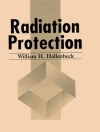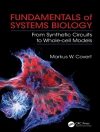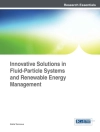Drawing on examples from various areas of physics, this textbook introduces the reader to computer-based physics using Fortran® and Matlab®. It elucidates a broad palette of topics, including fundamental phenomena in classical and quantum mechanics, hydrodynamics and dynamical systems, as well as effects in field theories and macroscopic pattern formation described by (nonlinear) partial differential equations. A chapter on Monte Carlo methods is devoted to problems typically occurring in statistical physics.
Contents
Introduction
Nonlinear maps
Dynamical systems
Ordinary differential equations I
Ordinary differential equations II
Partial differential equations I, basics
Partial differential equations II, applications
Monte Carlo methods (MC)
Matrices and systems of linear equations
Program library
Solutions of the problems
README and a short guide to FE-tools
Over de auteur
After completing his Ph D in 1988 Michael Bestehorn worked as a scientific assistant at the Institute for Theoretical Physics and Synergetics, University of Stuttgart. In 1991 he spent one year working at the University of Navarra (Pamplona, Spain) on an EC (EU) -funded research grant. In 1995 he completed his Habilitation and he obtained the Venia Legendi in Theoretical Physics at the University of Stuttgart. Between 1995 and 1999 he was a Privat Dozent at the University of Stuttgart before becoming a full Professor at Brandenburg University of Technology Cottbus in 1999. In 2007/08 he was a visiting professor at Norwegian University of Life Sciences, Aas, Norway. In 2011 he was a visiting professor at Reservoir Engineering Research Inst. Palo Alto, USA. In 2015 he was a visiting researcher at Swinburne University of Technology, Melbourne, Australia.
Michael Bestehorn’s expertice is in theoretical fluid dynamics and macroscopic pattern formation in non-equilibrium complex systems, including interfacial hydrodynamic instabilities, oscillatory instabilities in binary mixtures, thin liquid films, chemical non-equilibrium reactions, and light-matter interaction at interfaces. Recent work is devoted to epidemic models including stochastic and delay effects. He published more than 150 journal articles and three monographs that attracted over 3600 citations, his h-index is 35. In 2016 he chaired the 8th Conference of the International Marangoni Association in Bad Honnef, Germany. He was a lead researcher in several international projects, including the EU-funded project on the Application of the Phase-Field model to study boundary layers at liquid-liquid and liquid-gas interfaces (2000-2004) and the Convection and Interfacial Mass Exchange program (CIMEX), funded by the European Space Agency (2000-2008). He is currently leading the DFG (Deutsche Forschungsgemeinschaft) funded project on the Transport and mixing in parametrically excited fluid layers. He is a referee in numerous high-ranked journals: Physical Review A, E, Fluids, Physical Review Letters, Physics of Fluids, Journal of Fluid Mechanics, European Physical Journal, Fluid Dynamics Research, Langmuir, Advances in Water Resources. Throughout his career, Bestehorn has initiated and was a part of numerous international collaborations. The list of his co-authors contains 50 reputable names, including Hermann Haken of Stuttgart University, the founder of modern Synergetics, an interdisciplinary science that explains self-organization and pattern formation in open systems far from equilibrium.
Michael Bestehorn has made substantial contributions in the fields of fluid dynamics and nonlinear complex systems, covering such topics as Rayleigh-Bénard and Bénard-Marangoni convection, Rayleigh-Taylor, Kelvin-Helmholz and Faraday instabilities, liquid film dewetting and evaporation, interfacial mass and energy transfer, tidal waves and laser ablation patterns.












